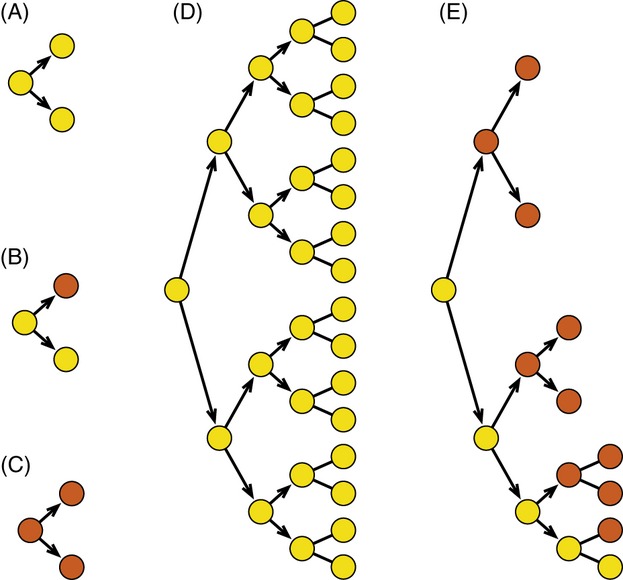Figure 1.

Models of cancer cell division and differentiation. Cancer stem cells, or tumor-propagating cells, are light yellow; transient cells are dark orange. The color version is available online. A tumor-propagating cell can divide (A) symmetrically, in which both daughters remain tumor-propagating cells, or (B) asymmetrically, in which one daughter remains a tumor-propagating cell and the other differentiates. (C) When a transient cell divides, both daughter cells become more differentiated. The relative proportion of a tumor-propagating clone's symmetric-to-asymmetric divisions affects the number of tumor-propagating cells in a neoplasm. (D) Clones of tumor-propagating cells that only divide symmetrically increase the tumor-propagating population size exponentially and (E) those that only divide asymmetrically do not. Because tumor-propagating cells may undergo apoptosis, they must divide symmetrically in some cases to maintain homeostasis.
